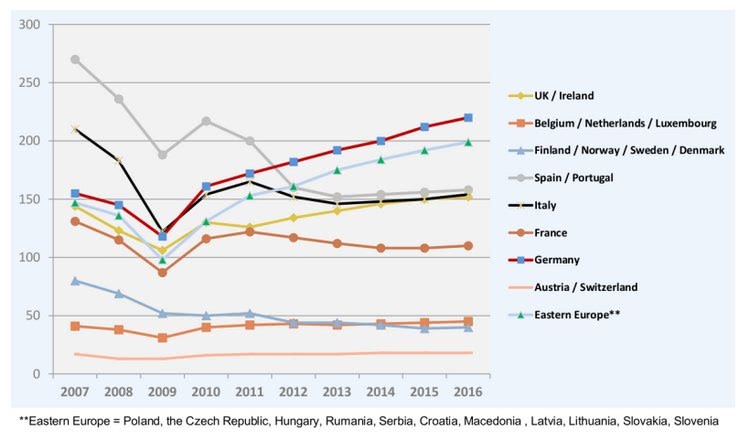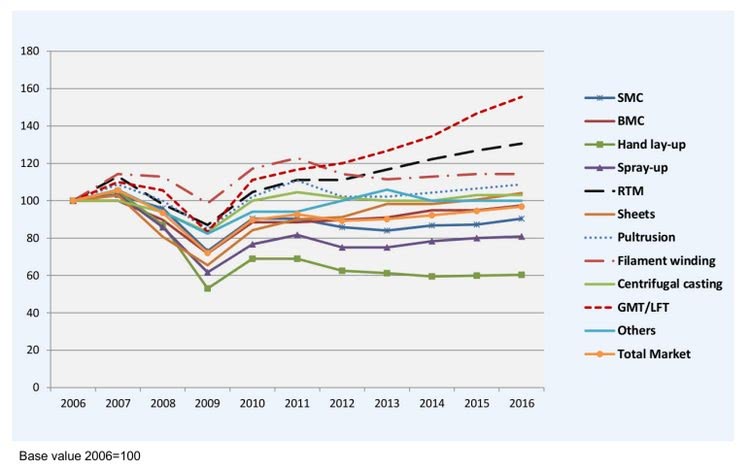 “Forecasts are difficult, especially when they concern the future.”
“Forecasts are difficult, especially when they concern the future.”These words have been ascribed to Niels Bohr, Mark Twain and Karl Valentin. But although no one knows exactly who said this, it is nevertheless true that all three candidates lived and worked during the first half of the last century. Moreover, the statement is just as topical now as it was at the time.
Fibre-reinforced plastics (also known as composites) have a large number of benefits. These include, for instance, excellent resistance to a wide range of media, considerable potential for use in lightweight construction, the option of a load-specific structure and a high level of design freedom. Composites are combinations of materials which consist of different components. These components are geared towards specific areas of application, can be custom-designed for each purpose and allow numerous combinations. This is reflected in a wide variety of materials, and there is no such thing as the ONE composite.

Fig. 1: Development of composites market: Europe
Products and applications can currently be found, for instance, in construction, the infrastructure sector, automotive engineering, mobility and the aerospace industry, though also in the sports and leisure industry and in many different electrical and electronic products.
Yet despite this diversity, composites are often subject to a certain amount of “generalisation”. They are described as having above-average potential for growth and as being the lightweight materials of the future. Others have highlighted endeavours to use composites in automotive mass production – though this point, in particular, has long been fulfilled already. Such an assessment is not wrong, but it makes it harder to appreciate the development of an industry which is highly diverse.
Fig. 1 shows the development of the European composites market over the last 10 years. This development has clearly been differing from one region/country to another. A similar picture emerges for the last few years when we look at developments for different manufacturing processes and products. Here, too, we can see not only areas of major growth, but also some downward tendencies (Fig. 2).

Fig. 2: Development of composites market: processes
In view of these different developments it is especially vital to understand the various markets and to keep up to date about relevant areas of growth and/or possible future developments.


